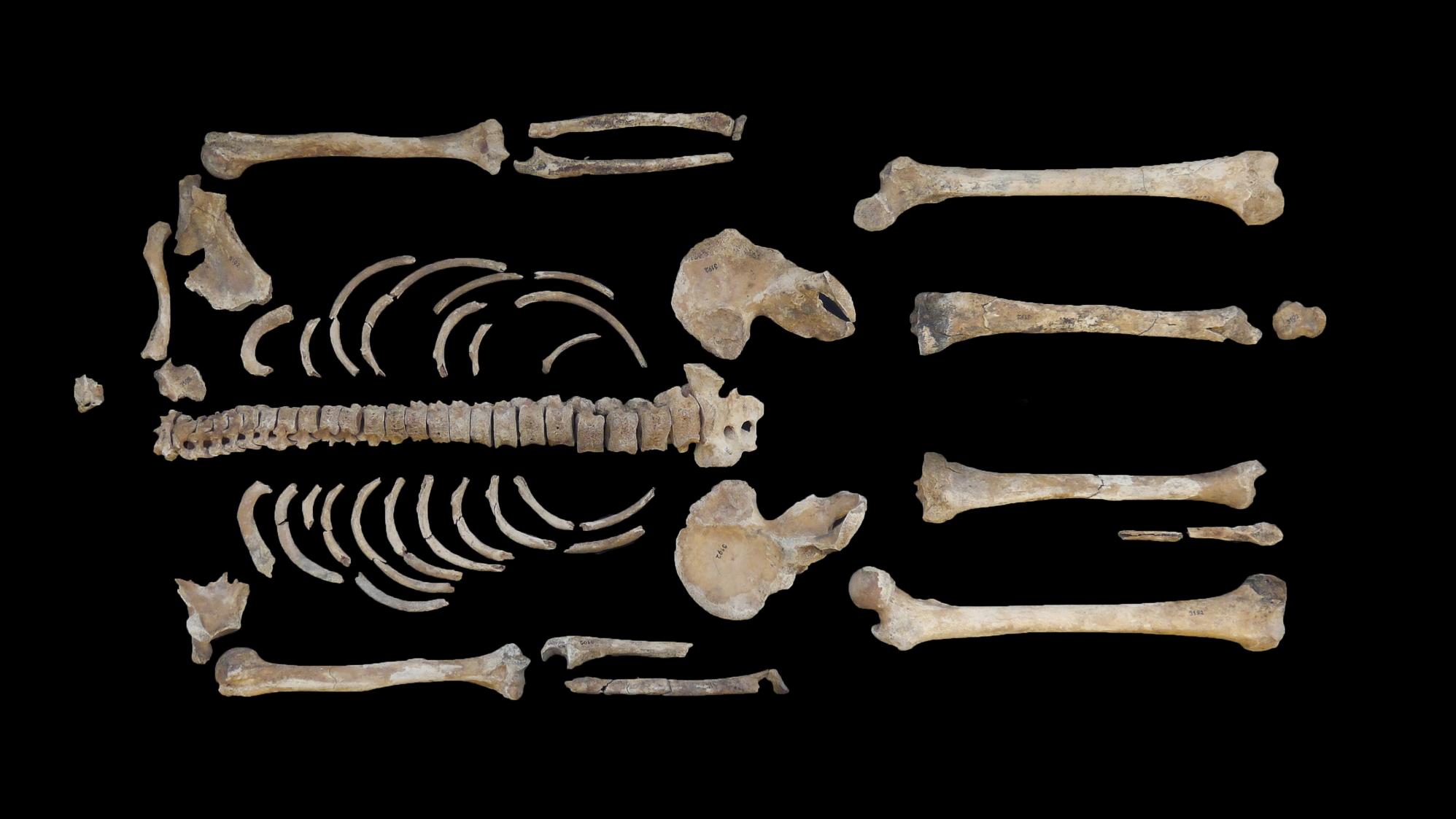
Around 2,500 years ago, an elite Celtic warrior was gravely injured by an arrowhead, but his wound partly healed thanks to meticulous medical treatment, a new study reports.
“Healing took at least several weeks,” study first author Michael Francken, an osteologist at the State Office for the Preservation of Monuments in the Stuttgart Regional Council, told Live Science in an email. “Most men of this period were familiar with combat, but the elites were probably more focused on it.”
In the new study, published online Feb. 23 in the International Journal of Osteoarchaeology, researchers analyzed a skeleton found in an Iron Age burial mound after noticing severe trauma to the pelvis. The man, who lived until he was between 30 and 50 years old, appeared to have been shot with a projectile.
The skeleton was discovered decades ago as the central burial beneath a large mound at the prehistoric hillfort site of Heuneburg in southern Germany. The mound was about 140 feet (43 meters) in diameter and nearly 10 feet (3 m) high. A limited number of artifacts were found in the burial due to grave robbers raiding the site in antiquity, but archaeologists identified fragments of a chariot, metal belt and jewelry that helped them date the burial to 530 to 520 B.C.
The researchers determined that the wound was located on the man’s left ischial bone — part of the pelvis sometimes referred to as the “sitz” bone — close to his hip socket. Based on the wound track’s direction through the bone, the researchers concluded that the man was struck in the pelvis from his front left, likely when he was running, sitting or riding.
Related: Were the Celts matriarchal? Ancient DNA reveals men married into local, powerful female lineages
Although no weapon was found embedded in the bone or in the grave, the researchers figured out what it was based on 3D CT scanning, which let them make a negative imprint of the wound.
The overall shape and size of the imprint suggested a small arrowhead caused the trauma to the man’s pelvis. Based on archaeologically known weapons of the time, it was most likely a long arrowhead with a diamond-shaped tip used in combat.
Because the ischial bone was not fully perforated, the arrow must have been pulled out, the researchers wrote. “The healing of the injury implies that the arrowhead was expertly removed and the wound received proper medical treatment,” they said.
No written records of medical treatment in the early Iron Age survive. However, based on evidence that the wound channel in the man’s pelvis had to be enlarged to remove the arrow, the researchers suspect that medical practitioners of the time had specialized implements to help treat injuries.
After the arrow was removed, the man likely needed several weeks to convalesce, the researchers said. “This suggests the injured person probably belonged to a social class exempt from daily physical labor for sustenance,” they wrote.
The smooth edges of the wound indicate that the injury occurred at least several months prior to the man’s death, Francken said, but “unfortunately, I can’t say whether there is a connection between the individual’s death and the injury.”
The exact nature of the battle this man was injured in is also unknown, as these Iron Age people did not keep written records of combat. But given this man’s access to medical care, the researchers think he was part of the elite social class, honored at death with a “princely burial” in a massive mound.



